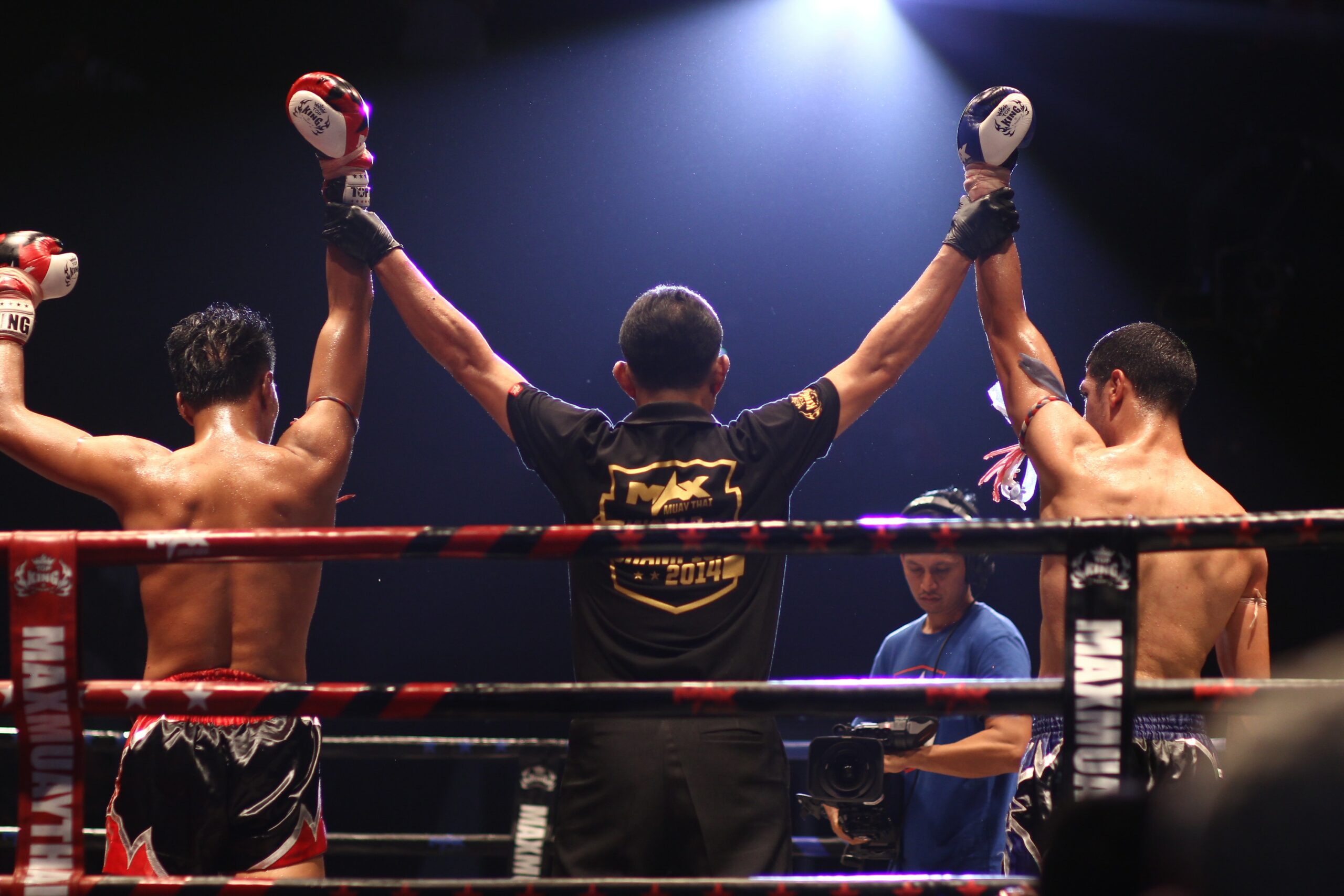Muay Thai Rules – Learn how to win Muay Thai

Explore the ancient art of Muay Thai, which originated in Thailand around the 16th century. Also known as ‘The Art of Eight Limbs,’ Muay Thai combines powerful strikes using fists, elbows, knees, and shins. Delve into its rich history and global impact.
![]()
How to win Muay Thai
To win Muay Thai, focus on mastering precision strikes, clinching techniques, and swift footwork. Adapting strategic combinations and maintaining exceptional conditioning will tip the scales in your favor, securing victory in the ring.
Requirements
- Mastery of Muay Thai requires a solid foundation in striking techniques such as punches, kicks, elbows, and knees, along with the ability to seamlessly transition between them.
- Practitioners must undergo rigorous physical training to build strength, endurance, flexibility, and cardiovascular fitness, enabling them to perform effectively during intense training sessions and fights.
- Muay Thai demands mental toughness, discipline, and focus to overcome challenges, endure grueling workouts, and stay composed in high-pressure situations within the ring.
- Practitioners should respect and understand the cultural and historical significance of Muay Thai, including its traditions, rituals, and codes of conduct, fostering a sense of honor and integrity.
- Consistent training and continuous refinement of techniques are essential to achieve proficiency and mastery in Muay Thai, requiring dedication and a growth-oriented mindset.
Objective
The objective of Muay Thai is to effectively strike and defend using a combination of fists, elbows, knees, and shins, while also promoting physical fitness, mental discipline, and respect for tradition and culture.
Scoring
- Fighters earn points for landing clean and powerful strikes on their opponent’s body or head using techniques like punches, kicks, elbows, and knees.
- Controlled clinching and delivering knees during this close-range technique can accumulate points, demonstrating dominance and effective use of grappling.
- Demonstrating control over the ring by dictating the pace, positioning, and movement can earn fighters additional points, showcasing strategic prowess.
- Skillful evasions, blocks, and counters to neutralize opponents’ attacks contribute to scoring, showcasing effective defensive techniques.
- Fighters who consistently push the pace, show aggression, and take the initiative in engaging their opponent often earn favor from judges and additional points.
Rules Of Muay Thai
Some Muay Thai Rules you must know are as follows:
- Fighters can use punches, kicks, knees, and elbows to strike opponents above the waistline.
- Striking the groin, throat, back of the head, and spine is not allowed.
- Clinching is permitted, allowing fighters to hold their opponent’s neck while delivering knee strikes. Excessive or unproductive clinching may be broken up by the referee.
- A fighter who is knocked down has a count of eight to rise and resume fighting. If knocked down three times in a round, the opponent wins by TKO (Technical Knockout).
- Judges score based on effective striking, defense, ring control, aggression, and dominance. Clean and powerful techniques are favored.
- Fights are typically divided into 3-5 rounds, each lasting 3 minutes, with a 2-minute break between rounds.
- Fighters wear gloves, shorts, and protective gear. Traditional Mongkol (headband) and Prajead (armbands) are worn during pre-fight rituals.
- The referee ensures fair play, enforces rules, and can deduct points or disqualify fighters for rule violations.
- A fight can be decided by judges’ scorecards if it goes the distance or by knockout, technical knockout, or disqualification.
- Fighters must adhere to a code of conduct that promotes respect for opponents, officials, and the sport’s traditions.
![]()
Frequently Asked Questions
- What is Muay Thai?
Muay Thai is a martial art and combat sport originating from Thailand. It is often referred to as “The Art of Eight Limbs” due to its emphasis on using fists, elbows, knees, and shins for striking. - Is Muay Thai only for professional fighters?
No, Muay Thai is practiced by people of all skill levels and fitness goals. Many engage in it for self-defense, physical fitness, stress relief, or as a recreational activity. - Do I need to be in good shape to start Muay Thai?
No, Muay Thai training is designed to help improve your fitness level over time. Beginners can start at their own pace and gradually build up their endurance and strength. - What equipment do I need for Muay Thai?
Basic equipment includes gloves, hand wraps, shorts, a mouthguard, and protective gear. Some gyms may require additional items like shin guards and headgear. - How long does it take to become proficient in Muay Thai?
The time it takes to become proficient varies based on individual dedication, training frequency, and natural ability. It typically takes several months to a few years to gain a solid foundation. - Is Muay Thai dangerous?
Like any combat sport, there is a risk of injury. However, proper training techniques, safety precautions, and controlled sparring can minimize these risks. - Can women practice Muay Thai?
Absolutely, Muay Thai is suitable for everyone regardless of gender. Many women practice Muay Thai for fitness, self-defense, and enjoyment. - Are there weight classes in Muay Thai?
Yes, Muay Thai competitions, especially at the professional level, often have weight classes to ensure fair matchups between fighters of similar size and weight. - What are the benefits of practicing Muay Thai?
Muay Thai offers numerous benefits, including improved cardiovascular health, enhanced physical fitness, self-confidence, stress relief, discipline, and a sense of community in the training gym. - Can I compete in Muay Thai fights even if I’m not aiming for a professional career?
Yes, many amateur Muay Thai events are held for practitioners who want to test their skills in a controlled environment without pursuing a professional career. These events are a great way to challenge yourself and gain experience.